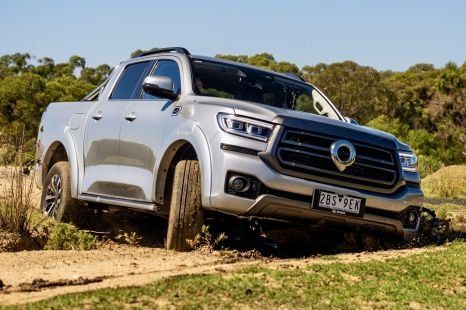

Max Davies
2026 GWM Cannon Ultra review
5 Days Ago
Can you park a wagon, hatchback or SUV in a Loading Zone? If you’re carrying goods, it is conceivable that you could but there are rules around it

Senior Contributor
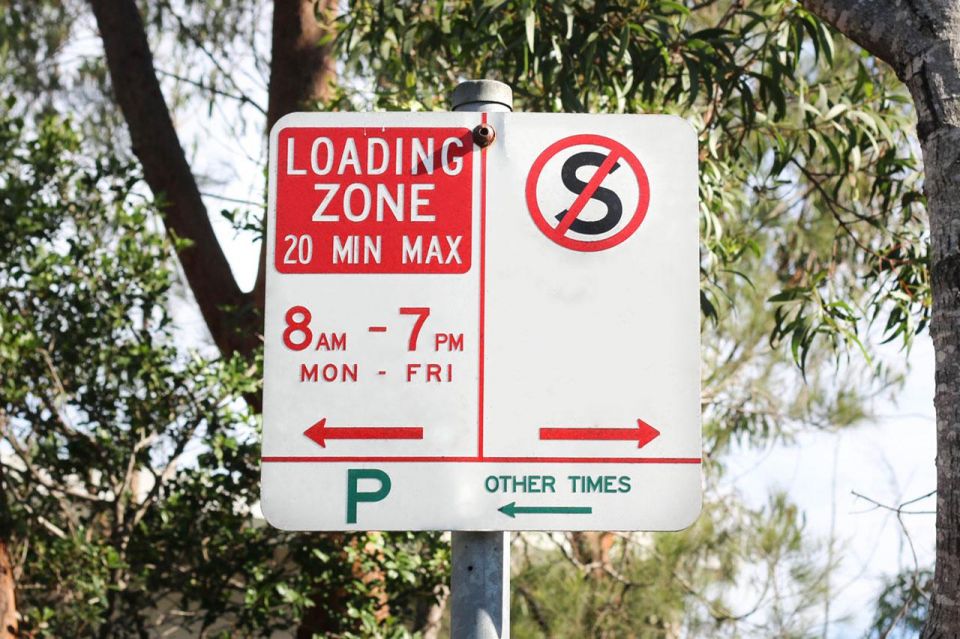

Senior Contributor
If you’ve driven in a parking-poor city and hunted for a spot for what feels like hours, you might have thought to yourself, “I’ll just pop into the Loading Zone, I’ll only be 10 minutes!”.
But there are rules around Loading Zones, and yes – you guessed it – they’re primarily for loading and unloading vehicles that are made for carrying stuff.
So, can you park a wagon or hatchback or SUV in a Loading Zone? If you’re carrying goods, it is conceivable that you could.

But there’s some wording you should keep in mind when it comes to these zones, which always look like prime real estate… but just like the hottest spots, you might end up paying a high price for the privilege.
In New South Wales, drivers are allowed to park in a Loading Zone under certain conditions.
The City of Sydney’s wording around the subject is: “Vehicles principally constructed for carrying goods can stop in a loading zone for up to 30 minutes to drop off or pick up items. Any vehicle can stop briefly to pick up or drop off passengers. Public buses can stop for up to 30 minutes to pick up or drop off passengers.” Whereas Transport for NSW adds a bit more to that, including the vital definition of what type of vehicle can park in these timed spots: “Types of goods vehicles include trucks, delivery vans and station wagons being used for goods delivery.”
Further, it is stated that: Loading zones are primarily intended to support businesses without access to off-street loading or parking facilities in areas with limited kerbside parking. A driver may park in a loading zone if:
Fines apply for not obeying the rules in Loading Zones. You could be penalised up to $196.
Similar laws in Melbourne for Loading Zones, with VicRoads stating: “Loading zones are provided to allow the pick up or delivery of loads or people close to their destination. They are not provided for short term parking.”
In Victoria there are different time limits for these spots (as signposted – the default is 30 mins), but there are some differences to what the rules are in NSW:
Victoria does offer “a friendly warning for business sedan and station wagon drivers”, that they must ensure their vehicle has sufficient signage to be identified as a business, company or courier vehicle.”
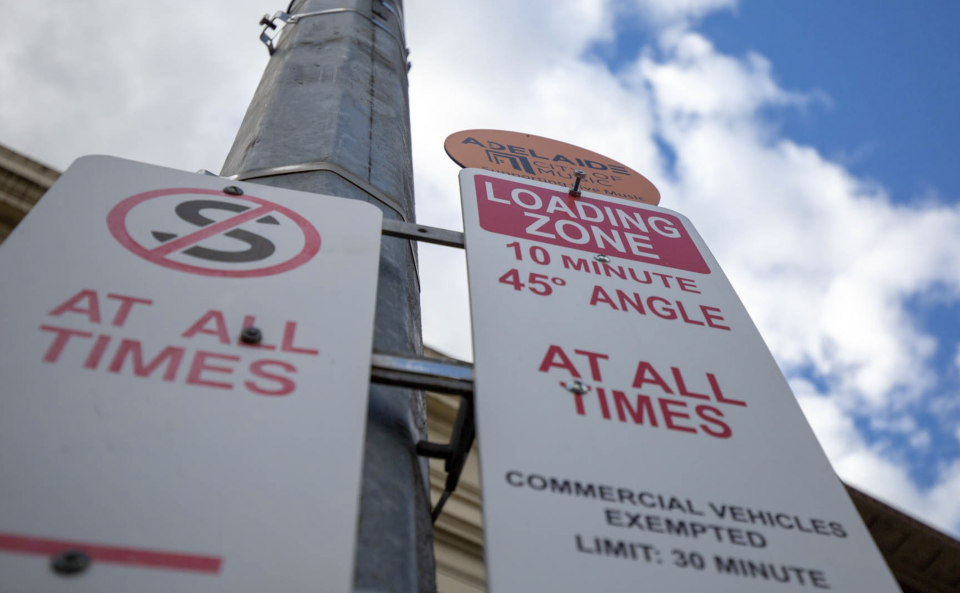
If your sign doesn’t come up to size – or you don’t have signage at all – you risk being booked. If you don’t have signs on your sedan or station wagon, use 1/4 hour or other standard parking areas for the picking up or delivery of loads.”
If you fail to follow the rules in Victoria, you could face a $110 fine.
Up in QLD, there are rules that – if broken – could see you cop a $117 fine (or double that if it’s a designated commercial vehicle space).
QLD Transport states that drivers must not stop in a Loading Zone unless you:
As with other states, time limits may vary depending on the area.
The South Australian driver’s handbook states that you must not stop or park your vehicle in a Loading Zone, unless you are:
Interestingly, the South Australian local government parking regulations (1991) also states that it is fine to use a Loading Zone if “the vehicle is parked only for the purpose of the immediate setting down or picking up of a passenger or goods”.
In the West, there are rules around parking in Loading Zones, too. But depending on which
Local Government Model By-laws (Parking Facilities) No. 19, states that a person shall not stand a vehicle in a loading zone unless it is:
And that states definition of a “commercial vehicle” is “a vehicle which comes within the
description of a motor wagon as set out in the Second Schedule to the Traffic Act”. Check your rego papers, then?
The City of Perth’s Street Parking Guide states that Loading Zones can only be used by “commercial vehicles defined under the City’s Parking Local Law”. And then, they can only do so when “picking up or dropping off goods”
That definition, according to the Guide, is “a motor vehicle that is: (a) constructed, adapted or fitted for the conveyance of goods; and (b) used primarily for the conveyance of goods, but does not include a vehicle constructed for the conveyance of materials used in any trade, business, industry or any other work.”
“Taxis, buses, trades, repair/service vehicles, on-demand vehicles or regular passenger vehicles cannot stop in a loading zone, even if loading or unloading.”
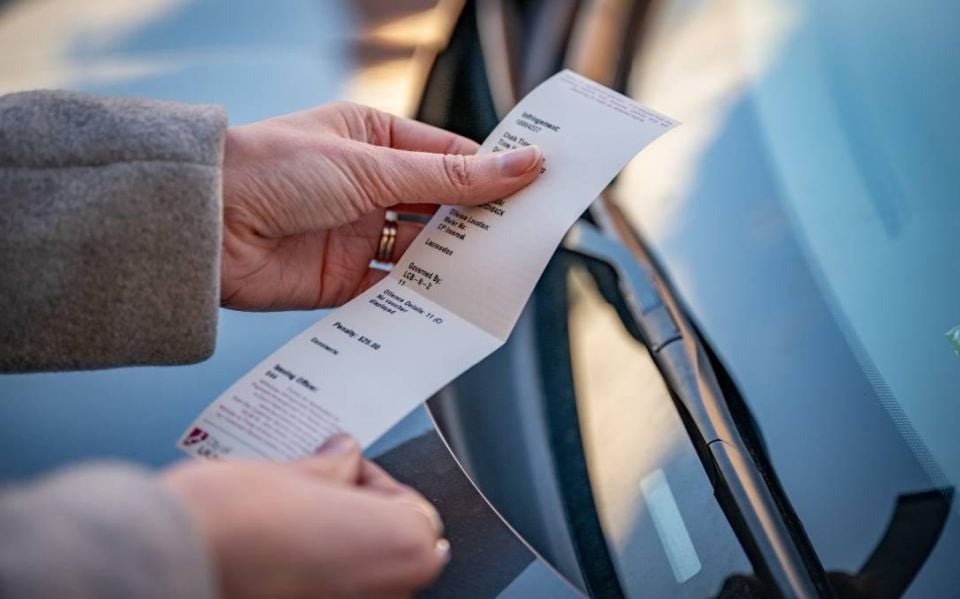
It seems like the rules in WA are open to interpretation, but if you’re found to be committing an offence, fines of $100 may apply.
In the Northern Territory it doesn’t appear that there is any strict enforcement around fines for parking in a Loading Zone, but there are some common sense rules set out in the Road Users’ handbook:
“Only drivers of vehicles principally constructed for carrying goods can park their vehicle in a loading zone. These vehicles can stop for up to 30 minutes if they are being loaded or unloaded.
“If you are driving any other sort of vehicle you can only stop to pick up or set down passengers at the kerb. Exceptions may apply to disabled parking permit holders.”
In our nation’s capital, there are a few different ways you could be fined if you’re found to be doing the wrong thing in a Loading Zone.
The following rules may apply “unless you have an Loading Zone parking permit or the vehicle is specifically permitted to use the Loading Zone”, according to Access Canberra.
Vehicles allowed to do so, according to the ACT Road Rules Regulation, 2017, include: a public bus that is dropping off or picking up passengers; or a truck that is dropping off or picking up goods; or a motor vehicle that is built mainly for the transport of goods and is dropping off or picking up goods; or a vehicle that is displaying a current loading zone permit and is complying with the conditions of the permit; or a taxi, rideshare vehicle or hire car, and the driver is dropping off or picking up passengers; and does not leave the vehicle unattended, otherwise than to comply with a passenger assistance requirement.
Under the rules, the following fines may apply:
It might be one of the less populated areas in the country, but Tasmanian laws might see you fined more than anywhere else for misusing a Loading Zone.
According to Tasmania Road Rules 2019: A driver must not stop in a loading zone unless the driver is driving:
The state maintains that Loading Zones are “provided for commercial vehicle loading or unloading only, for a maximum of 30 minutes (other conditions may also apply)”, and it is noted that vehicles must display the “full name and address of the registered operator”.
And note: “Passenger vehicles cannot stop in a loading zone, even if loading or unloading.”
Under the Offence Code: Stop in a loading zone or Exceed time in a loading zone, a driver could be fined up to $362 for doing the wrong thing.
Not intended as legal advice. Check with the relevant roads authority in your state or territory.
Matt has more than a decade of experience in automotive journalism, and loves exploring the pros and cons of new cars, delving into deep-dive industry stories, and going for a drive just for the fun of it.


Max Davies
5 Days Ago


Josh Nevett
3 Days Ago
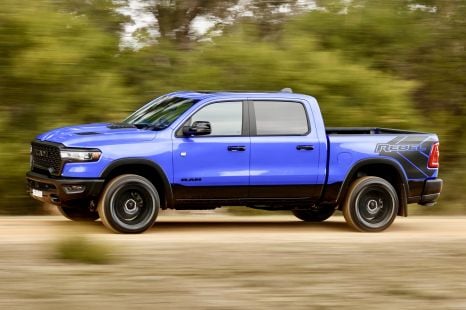

Max Davies
3 Days Ago


Max Davies
2 Days Ago


CarExpert.com.au
2 Days Ago


Damion Smy
2 Days Ago